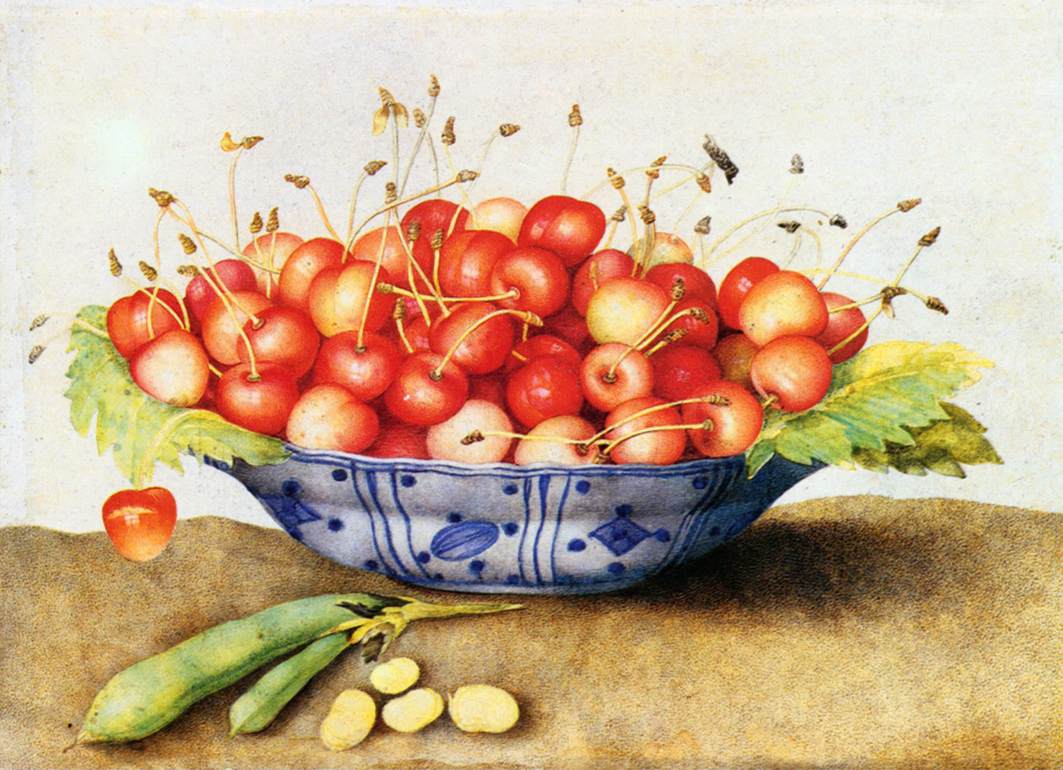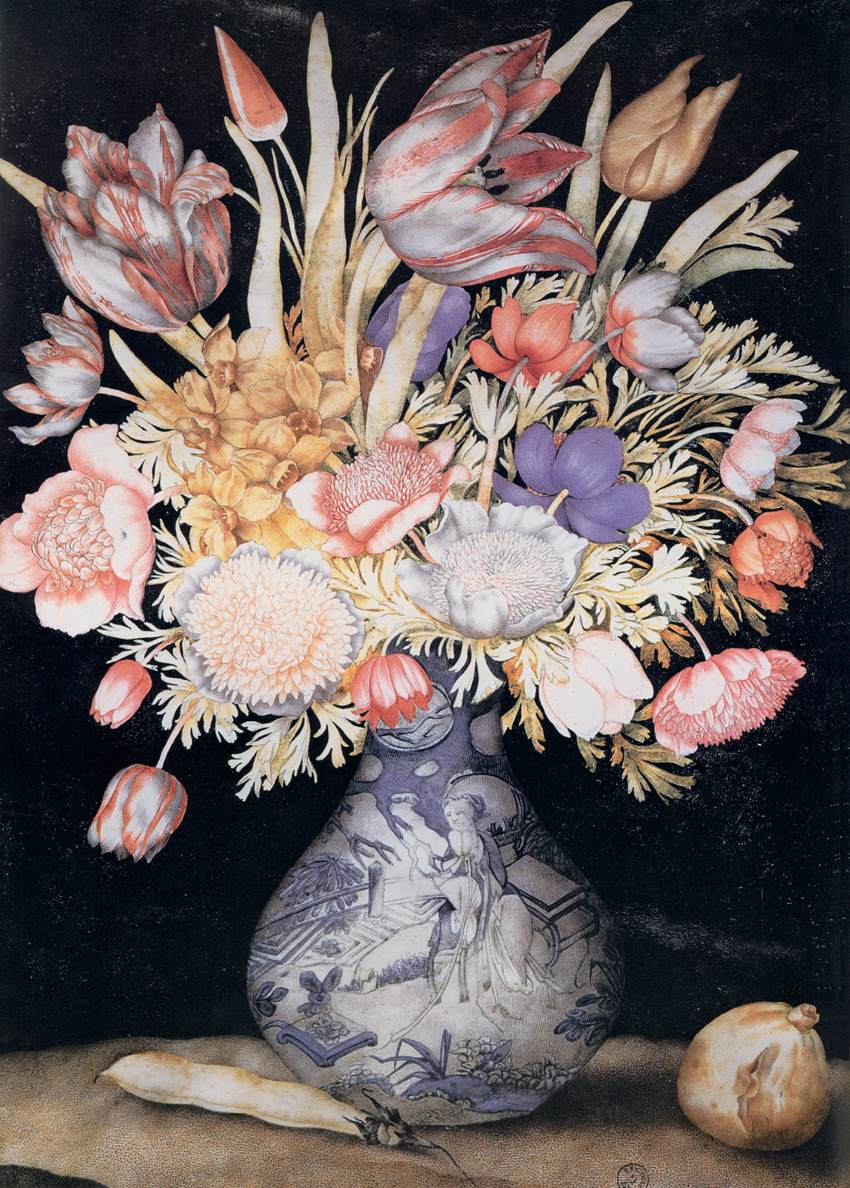Giovanna Garzoni (1600 – 1670), a pioneering female artist of her time, earned widespread respect and admiration for her meticulous still life paintings. Scientifically accurate and painted in a highly refined manner on her preferred medium of tempera on vellum, Garzoni’s depictions of botanical and zoological subjects brought her commissions from patrons such as the Medici family.
Garzoni was born in le Marche and moved to Venice to undergo her artistic training with Palma il Giovane and subsequently Tiberio Tinelli. after a brief and unhappy marriage to Tinelli, which was annulled, Garzoni dedicated her life to art. In her refusal to accept the expected path for a woman as deemed by the social strictures of her time, Garzoni marked herself as an exception. Free from marriage and children to pursue her artistic ambitions, her talents took her to the courts of Naples and Turin and drew the attention of patrons in other European cities such as Paris.
By the time of her arrival in Florence in the 1640s, she was already a mature and assured painter, with a refined technique and a highly individual style. During her 25 years of work for the Medici, she produced an array of exquisite depictions of the fruit, flora and fauna local to the Tuscan countryside, alongside portraits.
Garzoni spent her final years in Rome and in her will bequeathed her entire estate to the Accademia di San Luca, the city’s artists’ guild, with the stipulation that her tomb was to be located in their church.
As is common with historical female artists, Garzoni’s artistic fortune has only recently received critical attention in art historical scholarship and her importance and influence on the genres of botanical and still life painting are is now receiving the acknowledgement it deserves.
References:
Frick, Carole Collier, Stefania Biancani, and Elizabeth S. G. Nicholson. Italian Women Artists: from Renaissance to Baroque. Milano: Skira, 2007.
Further reading:
Casale, G. Giovanna Garzoni “Insigne miniatrice” 1600-1670. Milano: Roma, 1991.
Gli Incanti dell’Iride. Giovanna Garzoni pittrice nel Seicento, a cura di G. Casale. Cinisello Balsamo, 1996.
Trkulja, S. Meloni, E. Fumagalli. Giovanna Garzoni: nature morte. Milano, 2008.
Medici, de’, Lorenza. Florentines: a Tuscan Feast – Giovanna Garzoni 1600-1670. London: Pavilion, 1994.
“The Flowering of Florence: Botanical Art for the Medici”. National Gallery of Art: https://web.archive.org/web/20070916123526/http://www.nga.gov/exhibitions/flowerartist.htm
Images:
Still Life with Bowl of Citrons, late 1640s, tempera on vellum, 27.6 × 35.6 cm, J. Paul Getty Museum, Los Angeles.
Chinese Plate with Cherries and Bean Pods, about 1620, gouache on vellum, private collection.
Plate with White Beans, about 1650–1662, gouache on parchment, Galleria Palatina (Palazzo Pitti), Florence.
Figs, 1651-62, watercolour on parchment, 24.5 x 34.5 cm, Galleria Palatina (Palazzo Pitti), Florence.
Chinese Vase with Flowers, a Fig, and a Bean, 1625-50, watercolour and traces of black pencil on parchment, 51 x 36.9 cm, Galleria degli Uffizi, Florence.
Hyacinth with Four Cherries, a Lizard, and an Artichoke, tempera and traces of black pencil on vellum, 53.2 x 40.1 cm, Galleria degli Uffizi, Florence.
Self-Portrait, about 1650, pastel and charcoal on paper, 495 x 380 mm, Dumbarton Oaks Research Library, Washington.






